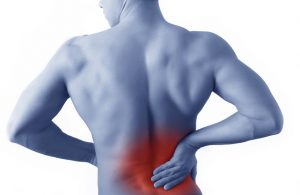Every ballroom dancer knows the pain of delayed-onset muscle soreness. Both eccentric muscle contractions—where the muscle fibers lengthen as they contract, like while landing from jumps—and concentric muscle contractions—like doing too many relevés—can bring it on. The aching feeling that sets in after 12 to 24 hours is a side effect of the repair process as your body heals microscopic muscle-fiber tears. But what are the best ways to deal with it so you can get back to dancing pain-free?
Snack Smart
Certain foods have been proven to decrease the duration and intensity of muscle soreness: Nutritionist Heidi Skolnik recommends adding cinnamon, ginger and cherry juice or tart cherries to your diet regularly—even before you get sore.
Don’t forget to stay adequately nourished and hydrated during challenging rehearsals. “How well does a dry sponge work compared to a nice moist one?” asks Green. “Apply that to your muscles.” Keep snacks in your bag to eat whenever you get a break.
Within 30 minutes after dancing, reach for a combination of carbohydrates and protein. “It helps to repair your muscle tissue,” . Having a snack like yogurt, chocolate milk, a peanut butter sandwich or cottage cheese with pineapple on or before your commute home. “Don’t worry about saving your calories for dinner,” . “If your snack is nutritious, it’s okay if it makes you less hungry and in turn have a smaller dinner.”
Stay Loose
Addressing your particular tight spots with regular bodywork, such as massage or acupuncture, can help prevent soreness by keeping your muscle fibers mobile. If you can’t afford private appointments, at least make sure your dance bag is packed with self-massage tools, like a foam roller, rolling stick and tennis ball.
Rehearse Strategically
When you’re in an intense rehearsal, pace yourself. “You know your body best,” . “Are you tired or stressed, or are you able to push yourself right now? Figure out how to use your energy so you don’t get too depleted, especially at the end of the day.” Working smart is as important as working hard. “If you are doing a movement that uses new muscles, there is a normal amount of time the body needs to acclimate to it.”
Cool Down
Although it’s just as important as warming up, cooling down often gets overlooked. “If you don’t stretch out, bring your body temperature down and do some self release at the end of a rehearsal or show, everything that follows in your commute, evening and sleep will conspire to make you tighter,” . “When you wake up the next morning, the tightness and soreness will feel 10 times stronger.”
Decrease Swelling
Once you get home, elevate your legs. “When you work the muscles really hard, the body responds to those microtears in the tissue by bringing blood to the area, which is inflammation,” . “While it marks the beginning of the healing process, it can also create swelling.” Experts debate whether icing, which can interrupt the inflammation process, is helpful. So far, research remains inconclusive, so experiment to find out what feels best on your body. If ice is not reducing the soreness, try alternating it with heat, or perhaps trying heat alone. “As a person and as a PT, I can’t imagine not icing,” . “I have never seen it work against someone.” She cautions against overusing ibuprofen (Advil) and naproxen (Aleve), as they can mask injury and prolong necessary treatment.
Go to Bed
Your muscles have their best chance at recovery when you’re sleeping. Without enough rest, they might not fully heal, which means you’ll continue pain
to strain muscles that are already weakened by microtears. So hit the pillow early, and avoid caffeine and alcohol so that you can get quality sleep.
Find what works for you
“Each individual knows his or her body best,” . “One remedy may be great for one person but useless for another.” Figure out what works best for you and don’t be afraid to try new strategies as your body or dance schedule changes.
Original Article at dancemagazine

